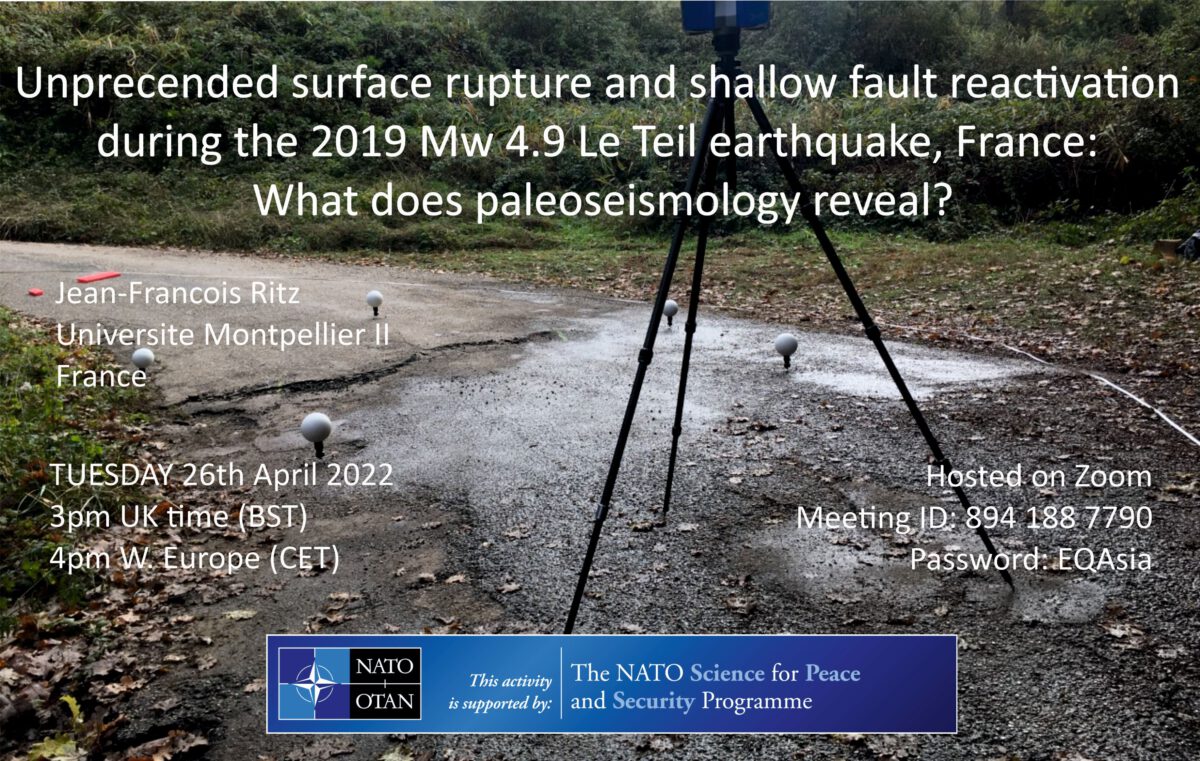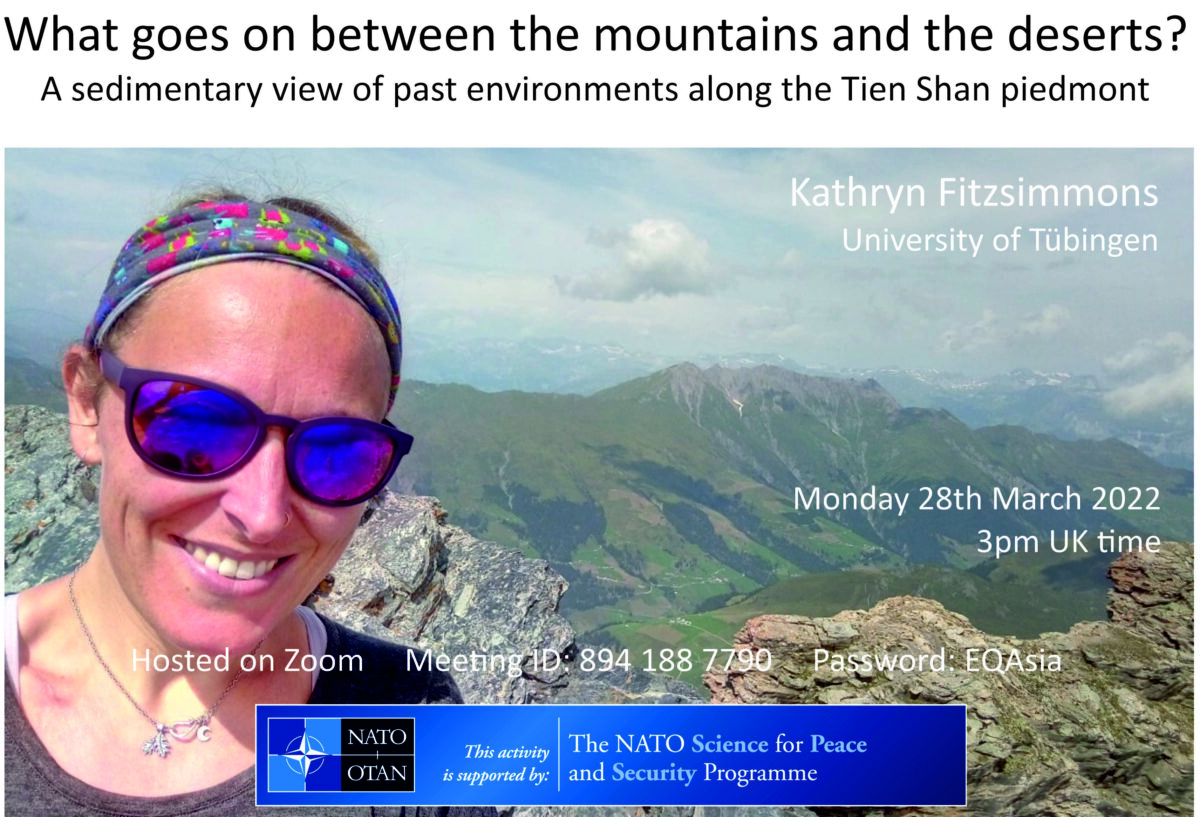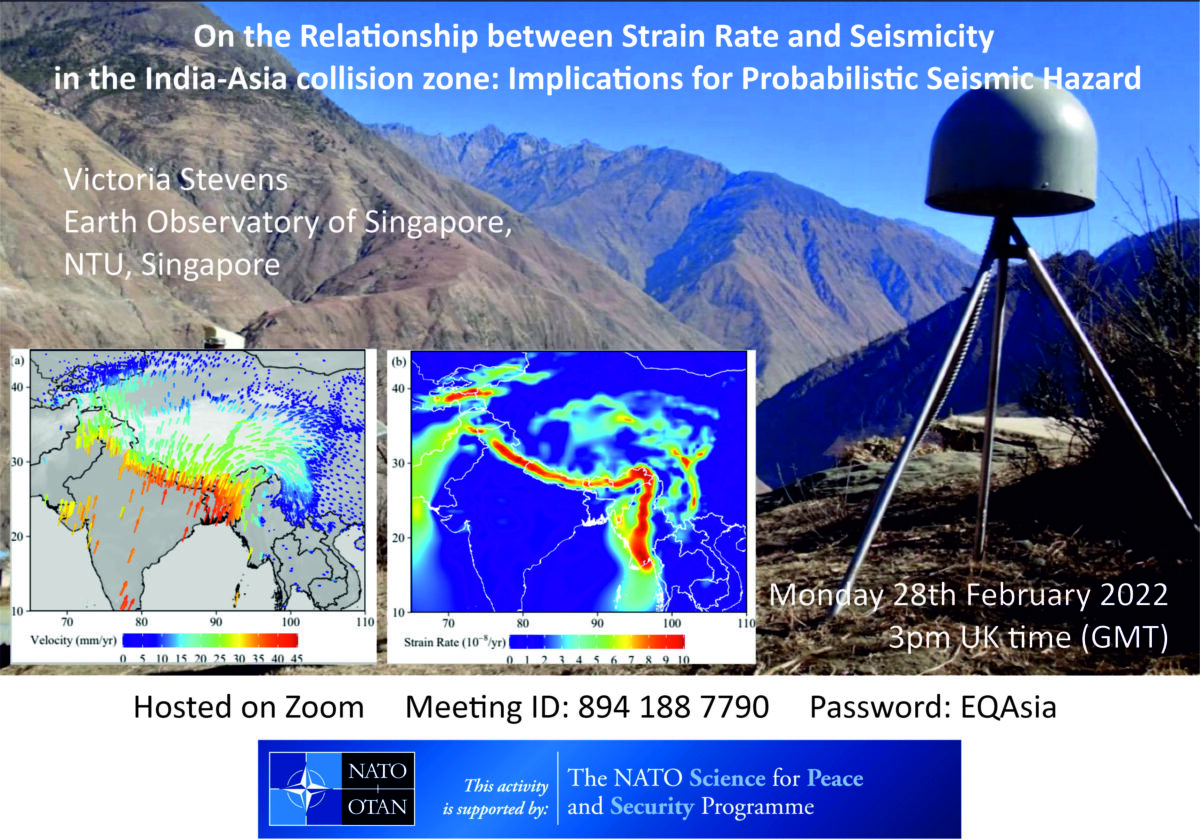On 26 April, 2022, Jean-Francois Ritz from Géosciences Montpellier talked about Unprecedented surface rupture and shallow fault reactivation during the 2019 Mw 4.9 Le Teil earthquake, France: What does paleoseismology reveal? in the framework of our NATO-funded project SPS G5690 – “Earthquake Hazard and Environmental Security in Kazakhstan and Kyrgyzstan”. In case you missed Jeff’s presentation, here’s the video.
Watch this space for future talks, always on the last Monday of every month, and follow us on Twitter for updates: https://twitter.com/QuakesCentAsia






